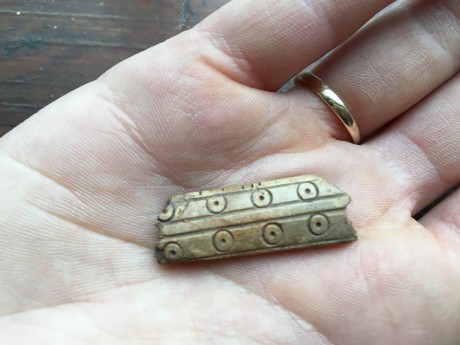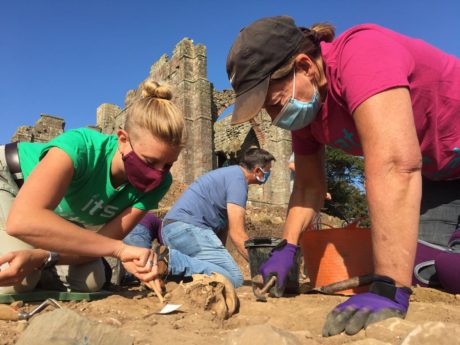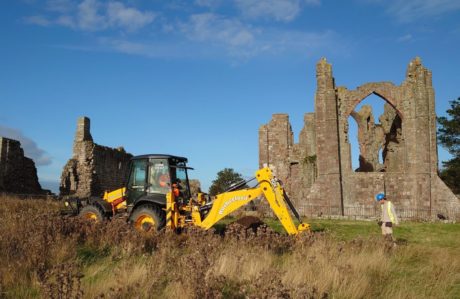
Appearances can be deceiving, and today an ordinary looking fragment of animal bone turned out to be so much more!
The finds room has been a hive of activity over the past week, and sometimes the objects that come in aren’t always what they seem! Whilst washing a small piece of animal bone today, Venturer Sydney made an awesome discovery…
On one side of the bone, delicate carvings started to emerge consisting of a ring and dot motif separated down the centre by two linear grooves. Turns out, this unassuming little bone was actually part of a decorative, early medieval comb, dating from the 10th-12th centuries.
With the help of Dr Steve Ashby from the University of York, it’s now been identified as a single-sided, early medieval, composite comb. In its completed state it would have consisted of two to four connecting plates riveted to bone, iron or copper alloy teeth.
The comb’s ring and dot pattern is a popular design on combs from this era, and would have been created using a rotary tool like a bow drill.
Though combs like this would have been used for aesthetic reasons, their primary purpose would have been for tackling those pesky head-lice.
Makes us itch just thinking about it!


